Python Sort List Of Tuples
Python is a versatile and popular programming language that offers a wide range of functionalities. One common task in programming is sorting data, and Python provides a variety of methods to accomplish this. In this article, we will explore how to sort a list of tuples in Python. We will also cover different scenarios and edge cases that you may encounter while sorting a list of tuples.
Understanding Tuples and Lists in Python
Before diving into sorting a list of tuples, it’s essential to understand the difference between a tuple and a list in Python. A tuple is an immutable data structure, meaning its elements cannot be modified once it is created. On the other hand, a list is a mutable data structure, allowing for modifications to its elements.
A tuple is defined by enclosing elements inside parentheses, whereas a list is defined using square brackets. Here is an example of a tuple and a list:
“`
my_tuple = (1, 2, 3)
my_list = [1, 2, 3]
“`
Sorting a List of Tuples Based on a Single Element
To sort a list of tuples based on a single element within each tuple, we can use the `sorted()` function. The `sorted()` function takes an iterable as its argument and returns a new sorted list.
Let’s say we have a list of tuples representing students and their corresponding scores:
“`
students = [(‘Alice’, 85), (‘Bob’, 75), (‘Charlie’, 90), (‘David’, 80)]
“`
We want to sort this list based on the students’ scores. To achieve this, we can pass a lambda function as the `key` parameter to the `sorted()` function:
“`python
sorted_students = sorted(students, key=lambda x: x[1])
print(sorted_students)
“`
Output:
“`python
[(‘Bob’, 75), (‘David’, 80), (‘Alice’, 85), (‘Charlie’, 90)]
“`
Here, the lambda function `lambda x: x[1]` specifies that we want to sort the tuples based on the second element (score) within each tuple.
Sorting a List of Tuples Based on Multiple Elements
Sometimes, you may need to sort a list of tuples based on multiple elements. For example, let’s say we have a list of employees with each tuple containing their name, age, and salary:
“`python
employees = [(‘Alice’, 25, 5000), (‘Bob’, 30, 4500), (‘Charlie’, 22, 5000), (‘David’, 30, 4000)]
“`
To sort this list first by salary and then by age, we can pass a tuple as the `key` parameter to the `sorted()` function:
“`python
sorted_employees = sorted(employees, key=lambda x: (x[2], x[1]))
print(sorted_employees)
“`
Output:
“`python
[(‘David’, 30, 4000), (‘Bob’, 30, 4500), (‘Charlie’, 22, 5000), (‘Alice’, 25, 5000)]
“`
In this example, the lambda function `lambda x: (x[2], x[1])` specifies that we want to sort the tuples first by the third element (salary) and then by the second element (age) within each tuple.
Sorting a List of Tuples in Descending Order
By default, the `sorted()` function sorts elements in ascending order. However, if you want to sort a list of tuples in descending order, you can pass the `reverse=True` parameter to the `sorted()` function.
For instance, let’s sort a list of tuples representing prices in descending order:
“`python
prices = [(‘Apple’, 2.5), (‘Banana’, 1.2), (‘Orange’, 1.8), (‘Mango’, 3.2)]
sorted_prices = sorted(prices, key=lambda x: x[1], reverse=True)
print(sorted_prices)
“`
Output:
“`python
[(‘Mango’, 3.2), (‘Apple’, 2.5), (‘Orange’, 1.8), (‘Banana’, 1.2)]
“`
Here, passing `reverse=True` ensures that the list is sorted in descending order based on the second element (price) within each tuple.
Sorting a List of Tuples with Custom Sorting Functions
In some cases, you may want to define a custom sorting function to sort a list of tuples. This can be achieved by creating a separate function that returns a value used for comparison.
Let’s consider a list of tuples representing books and their publication years:
“`python
books = [(‘Book1’, 2005), (‘Book2’, 1999), (‘Book3’, 2010), (‘Book4’, 2003)]
“`
To sort this list in ascending order based on the publication year modulo 100, we can create a custom sorting function:
“`python
def custom_sort(book):
return book[1] % 100
sorted_books = sorted(books, key=custom_sort)
print(sorted_books)
“`
Output:
“`python
[(‘Book2’, 1999), (‘Book4’, 2003), (‘Book1’, 2005), (‘Book3’, 2010)]
“`
In this example, the `custom_sort()` function calculates the modulo of the publication year by 100 and returns it as the value used for comparison.
Sorting a List of Tuples with Lambda Functions
Lambda functions are anonymous functions in Python that can be defined inline. They are often used for simple, one-line functions. When sorting a list of tuples, lambda functions can be used to specify the sorting criteria concisely.
Let’s consider a list of tuples representing products and their corresponding prices:
“`python
products = [(‘Apple’, 2.5), (‘Banana’, 1.2), (‘Orange’, 1.8), (‘Mango’, 3.2)]
“`
To sort this list in ascending order based on the product name, we can use a lambda function:
“`python
sorted_products = sorted(products, key=lambda x: x[0])
print(sorted_products)
“`
Output:
“`python
[(‘Apple’, 2.5), (‘Banana’, 1.2), (‘Mango’, 3.2), (‘Orange’, 1.8)]
“`
Here, the lambda function `lambda x: x[0]` specifies that we want to sort the tuples based on the first element (product name) within each tuple.
Handling Edge Cases and Exceptions
While sorting a list of tuples, you may encounter several edge cases and exceptions. Here are a few commonly asked questions and their solutions:
Q: How to sort a list of tuples based on the first element of each tuple?
A: To sort a list of tuples based on the first element, you can use the `operator.itemgetter(0)` function as the `key` parameter in the `sorted()` function. Example: `sorted_list = sorted(my_list, key=operator.itemgetter(0))`.
Q: How to get all the first elements of a list of tuples?
A: To get all the first elements (or any other specific element) of a list of tuples, you can use a list comprehension. Example: `[x[0] for x in my_list]`.
Q: How to sort a list of tuples by a specific key?
A: To sort a list of tuples by a specific key, you can pass the desired key to the `key` parameter in the `sorted()` function. Example: `sorted_list = sorted(my_list, key=lambda x: x[2])`.
Q: How to sort a list of tuples based on multiple keys?
A: To sort a list of tuples based on multiple keys, you can pass a tuple of keys to the `key` parameter in the `sorted()` function. Example: `sorted_list = sorted(my_list, key=lambda x: (x[1], x[0]))`.
Q: How to convert a list to a tuple in Python?
A: To convert a list to a tuple, you can use the `tuple()` function. Example: `my_tuple = tuple(my_list)`.
In conclusion, sorting a list of tuples in Python can be easily accomplished using the `sorted()` function and lambda functions. By understanding the various methods and techniques mentioned in this article, you can efficiently sort lists of tuples based on different criteria. Remember to handle edge cases and exceptions to ensure accurate and reliable results in your sorting operations.
Sort List Of Python Tuples Based On First, Second And Last Elements | Python Basics
Keywords searched by users: python sort list of tuples Sort tuple Python, Get all first elements of list of tuples python, Python sort by key, Python sort lambda key, Transform list to tuple python, Python sort multiple keys, Sort list number Python, Python sort list two conditions
Categories: Top 64 Python Sort List Of Tuples
See more here: nhanvietluanvan.com
Sort Tuple Python
Tuples are immutable collections in Python that can contain a variety of data types. They are similar to lists, but unlike lists, tuples cannot be modified once they are created. Sorting tuples in Python is a common operation that allows us to organize our data in a specific order. In this article, we will explore different methods to sort tuples in Python, discuss the advantages and limitations of each method, and provide examples for better understanding.
Methods to Sort Tuples
Python offers several methods to sort tuples, each with its own advantages and use cases. Let’s discuss some of the most commonly used methods:
1. Using the sorted() function:
The sorted() function is a built-in Python function that takes an iterable as an argument and returns a new sorted list. However, when used with tuples, it returns a sorted tuple instead. This method is simple and straightforward, as it creates a new tuple with sorted elements without modifying the original tuple. The sorted() function uses the default sorting order for the elements, which works well with numbers and strings.
Here’s an example of using the sorted() function to sort a tuple with numeric elements:
“`python
tuple_nums = (6, 2, 8, 1, 9)
sorted_tuple = tuple(sorted(tuple_nums))
print(sorted_tuple)
“`
Output: (1, 2, 6, 8, 9)
2. Using the tuple() constructor with the sorted() function:
Another method to sort tuples is using the tuple() constructor with the sorted() function. This method creates a new tuple by converting the sorted list returned by the sorted() function. This approach is useful if we want to sort tuples with non-comparable elements, such as tuples containing both numbers and strings.
Let’s consider the following example:
“`python
tuple_elements = (“John”, “Alice”, 42, 17)
sorted_tuple = tuple(sorted(tuple_elements, key=lambda x: str(x)))
print(sorted_tuple)
“`
Output: (17, 42, “Alice”, “John”)
3. Using the sorted() function with custom sorting criteria:
To sort tuples based on custom criteria, we can utilize the key parameter of the sorted() function. The key parameter takes a function that defines the sorting criteria. This method allows us to provide our own sorting logic and is particularly useful when sorting tuples based on specific attributes or properties.
Here’s an example of sorting a list of tuples based on the second element of each tuple:
“`python
tuple_list = [(5, “apple”), (2, “banana”), (7, “cherry”)]
sorted_tuples = sorted(tuple_list, key=lambda x: x[1])
print(sorted_tuples)
“`
Output: [(5, “apple”), (2, “banana”), (7, “cherry”)]
Advantages and Limitations of Sorting Tuples
Sorting tuples in Python offers several advantages, including:
1. Maintain order: Sorting tuples enables us to keep our data organized in a specific order, making it easier to process or analyze.
2. Non-mutable: Tuples are immutable, meaning they cannot be modified once created. Sorting tuples creates a new sorted tuple, preserving the integrity of the original data.
However, there are some limitations of sorting tuples:
1. Changing order requires creation of a new tuple: Since tuples are immutable, every time we need to change the order of elements in a tuple, a new tuple must be created.
2. Sorting may not work for all data types: Sorting tuples with non-comparable data types, such as tuples with a combination of integers and strings, may require additional methods or rules to be defined.
Frequently Asked Questions (FAQs)
Q1. Can you sort a tuple in descending order?
Yes, both the sorted() function and the method using the tuple() constructor allow sorting tuples in descending order. To achieve this, we can use the reverse parameter of the sorted() function.
Here’s an example of sorting a tuple in descending order:
“`python
tuple_nums = (6, 2, 8, 1, 9)
sorted_tuple = tuple(sorted(tuple_nums, reverse=True))
print(sorted_tuple)
“`
Output: (9, 8, 6, 2, 1)
Q2. How can I sort a tuple based on multiple elements?
To sort a tuple based on multiple elements, we can define a custom sorting key using the lambda function. The lambda function allows us to specify the order of multiple elements within the tuple.
Let’s consider an example where we sort a tuple based on both the first and second elements:
“`python
tuple_list = [(5, “apple”), (2, “banana”), (7, “cherry”), (2, “apple”)]
sorted_tuples = sorted(tuple_list, key=lambda x: (x[0], x[1]))
print(sorted_tuples)
“`
Output: [(2, “apple”), (2, “banana”), (5, “apple”), (7, “cherry”)]
Q3. How can I sort a tuple based on specific attribute or property value?
To sort a tuple based on a specific attribute or property value, we can use the key parameter of the sorted() function and provide a lambda function that returns the desired attribute or property.
Consider the following example where we sort a list of tuples based on the length of the second element:
“`python
tuple_list = [(5, “apple”), (2, “banana”), (7, “cherry”)]
sorted_tuples = sorted(tuple_list, key=lambda x: len(x[1]))
print(sorted_tuples)
“`
Output: [(7, “cherry”), (5, “apple”), (2, “banana”)]
Conclusion
In this article, we explored different methods to sort tuples in Python. We learned how to use the sorted() function to sort tuples based on default or custom sorting criteria. We also discussed using the tuple() constructor to convert sorted lists into tuples. Sorting tuples in Python provides an effective way to maintain the order of elements and organize data for further processing or analysis. By understanding the different methods available, we can choose the appropriate approach based on the requirements of our project.
Get All First Elements Of List Of Tuples Python
In Python, a tuple is an ordered and immutable collection of elements enclosed in parentheses. It can store multiple values of different data types. Sometimes, we may encounter a scenario where we have a list of tuples and we want to extract only the first elements from each tuple. In this article, we will explore various ways to accomplish this task efficiently.
Method 1: Using a for loop
One simple way to extract the first elements from each tuple is by iterating over the list of tuples using a for loop. For every tuple, we can access the first element by index 0 and store it in a new list. Here’s an example:
“`python
# list of tuples
list_of_tuples = [(‘apple’, 1), (‘banana’, 2), (‘orange’, 3)]
# empty list to store first elements
first_elements = []
# iterate over the list of tuples
for item in list_of_tuples:
# access the first element and append it to the new list
first_elements.append(item[0])
# print the first elements
print(first_elements)
“`
Output:
“`python
[‘apple’, ‘banana’, ‘orange’]
“`
Method 2: Using list comprehension
Python provides a concise way to achieve the same result using list comprehension. List comprehension allows us to create a new list by iterating over an existing list in a single line. Here’s the same example as above, but with list comprehension:
“`python
# list of tuples
list_of_tuples = [(‘apple’, 1), (‘banana’, 2), (‘orange’, 3)]
# using list comprehension to get the first elements
first_elements = [item[0] for item in list_of_tuples]
# print the first elements
print(first_elements)
“`
Output:
“`python
[‘apple’, ‘banana’, ‘orange’]
“`
Method 3: Using the map() function
Another approach to extracting the first elements from a list of tuples is by using the map() function in conjunction with lambda functions. The map() function applies a specific function to each element of an iterable and returns an iterator.
“`python
# list of tuples
list_of_tuples = [(‘apple’, 1), (‘banana’, 2), (‘orange’, 3)]
# using map() and lambda function to extract first elements
first_elements = list(map(lambda item: item[0], list_of_tuples))
# print the first elements
print(first_elements)
“`
Output:
“`python
[‘apple’, ‘banana’, ‘orange’]
“`
FAQs
Q1. Can we use the same approach to extract elements from nested lists of tuples?
Yes, the methods discussed above can also be applied to nested lists of tuples. In this case, we would need to iterate over the nested structure and access the first elements accordingly.
Q2. What happens if the first element of a tuple is not present?
If a tuple does not have a first element, an IndexError will be raised when trying to access it. It is important to ensure that the tuples in the list have at least one element before attempting to extract it.
Q3. Can we use these methods with different data types for the first elements?
Absolutely! The methods explained above work with tuples of any data type as long as the first element can be accessed using the appropriate index.
Q4. How can we handle cases where the list of tuples is empty?
If the list of tuples is empty, all three methods will result in an empty first_elements list. It is important to handle this scenario based on the specific requirements of the program.
Q5. Is there a performance difference between the three methods?
In general, list comprehension tends to be more efficient and faster compared to using for loops and the map() function. However, the actual performance difference may vary depending on the size of the list and other factors.
Conclusion
Extracting the first elements from a list of tuples in Python is a common task. In this article, we explored different methods to accomplish this efficiently. Whether you prefer using a for loop, list comprehension, or the map() function, now you have the knowledge to achieve your goal. Remember to handle edge cases and consider your program’s specific requirements. Happy coding!
Python Sort By Key
Sorting is a fundamental operation in programming, enabling the arrangement of elements in a specific order. Python, a versatile and powerful programming language, provides several methods for sorting data structures. One of the key sorting techniques in Python is sorting by key. In this article, we will explore the ins and outs of sorting by key in Python, providing a comprehensive guide to help you leverage this functionality effectively.
Understanding Sorting by Key in Python
Sorting by key involves arranging the elements of a data structure based on a specific criterion or key. Unlike standard sorting where elements are compared using their natural order, sorting by key allows customization by considering a specific attribute or characteristic of the elements.
To sort by key, Python provides a built-in function called `sorted()` that returns a new sorted list from any iterable data structure. Additionally, Python offers the `sort()` method, which directly sorts the elements in place within the same data structure.
Sorting Lists by Key
The primary usage of sorting by key is with lists in Python. Let’s begin by sorting a list by a simple key, such as the element itself. Consider the following list:
“`python
fruits = [‘apple’, ‘banana’, ‘cherry’, ‘date’, ‘elderberry’]
“`
To sort this list alphabetically, we can use the `sorted()` function as follows:
“`python
sorted_fruits = sorted(fruits)
“`
The `sorted()` function returns a new list, `sorted_fruits`, containing the sorted elements:
“`
[‘apple’, ‘banana’, ‘cherry’, ‘date’, ‘elderberry’]
“`
The original list, `fruits`, remains unchanged. However, if we want to sort the list in place without creating a new list, we can use the `sort()` method:
“`python
fruits.sort()
“`
Now, the `fruits` list is sorted:
“`
[‘apple’, ‘banana’, ‘cherry’, ‘date’, ‘elderberry’]
“`
Sorting by Key Using a Lambda Function
To perform custom sorts, Python allows us to utilize lambda functions, which are small, anonymous functions. These functions can be used as keys for sorting. For instance, let’s sort a list of dictionaries containing information about students based on their age:
“`python
students = [
{‘name’: ‘John’, ‘age’: 19},
{‘name’: ‘Emma’, ‘age’: 21},
{‘name’: ‘Luke’, ‘age’: 18},
{‘name’: ‘Alice’, ‘age’: 20}
]
“`
To sort this list by the age of each student, we can employ a lambda function as the key parameter to `sorted()`:
“`python
sorted_students = sorted(students, key=lambda s: s[‘age’])
“`
The resulting list, `sorted_students`, will contain the dictionaries sorted based on the ages:
“`
[
{‘name’: ‘Luke’, ‘age’: 18},
{‘name’: ‘John’, ‘age’: 19},
{‘name’: ‘Alice’, ‘age’: 20},
{‘name’: ‘Emma’, ‘age’: 21}
]
“`
Sorting in Reverse Order
Python provides an option to sort in reverse order by specifying the `reverse=True` parameter. Let’s take our previous example and sort the students’ list in descending order of age:
“`python
sorted_students_reverse = sorted(students, key=lambda s: s[‘age’], reverse=True)
“`
The resulting list, `sorted_students_reverse`, will now display the students in descending order of age:
“`
[
{‘name’: ‘Emma’, ‘age’: 21},
{‘name’: ‘Alice’, ‘age’: 20},
{‘name’: ‘John’, ‘age’: 19},
{‘name’: ‘Luke’, ‘age’: 18}
]
“`
Sorting with Multiple Criteria
Python’s `sorted()` function also supports sorting based on multiple criteria. Consider a list of tuples where each tuple represents a student’s name and score:
“`python
students_scores = [
(‘John’, 78),
(‘Emma’, 92),
(‘Luke’, 85),
(‘Alice’, 78)
]
“`
To sort this list in ascending order of scores, and if two scores match, in alphabetical order of names, we can provide a tuple as the key parameter:
“`python
sorted_scores = sorted(students_scores, key=lambda s: (s[1], s[0]))
“`
The resulting list, `sorted_scores`, will display the tuples sorted based on scores and names:
“`
[
(‘Alice’, 78),
(‘John’, 78),
(‘Luke’, 85),
(‘Emma’, 92)
]
“`
FAQs about Python Sorting by Key
Q1: Can I sort complex data structures like nested lists or dictionaries by key?
A1: Yes, you can sort nested lists or dictionaries by specifying the appropriate key or lambda function based on the desired criterion.
Q2: How does sorting by key differ from sorting by attribute in Python?
A2: Sorting by key allows customization by considering any criterion, not necessarily an attribute. Sorting by attribute implies sorting based on a specific attribute of the elements.
Q3: Can I sort objects of custom classes by key?
A3: Yes, by defining a custom comparison method or by using the `key` parameter with a lambda function. This allows you to sort objects based on specific attributes or criteria.
Q4: Can I sort a list in reverse order using the `sort()` method?
A4: Yes, you can simply pass `reverse=True` as a parameter to the `sort()` method to sort in reverse order.
Q5: How can I sort a list of numerical values in descending order?
A5: You can use the `key` parameter with a lambda function, specifying the element itself as the key and setting `reverse=True`.
In conclusion, sorting by key in Python is a powerful tool that enables custom sorting based on specific criteria. Python’s `sorted()` function and the `sort()` method provide convenient ways to sort data structures, such as lists, in a desired order. By employing lambda functions, you can easily sort by various attributes and even sort in reverse order. Understanding and utilizing this sorting technique will undoubtedly enhance your programming skills and allow you to efficiently organize data in your Python applications.
Images related to the topic python sort list of tuples

Found 11 images related to python sort list of tuples theme
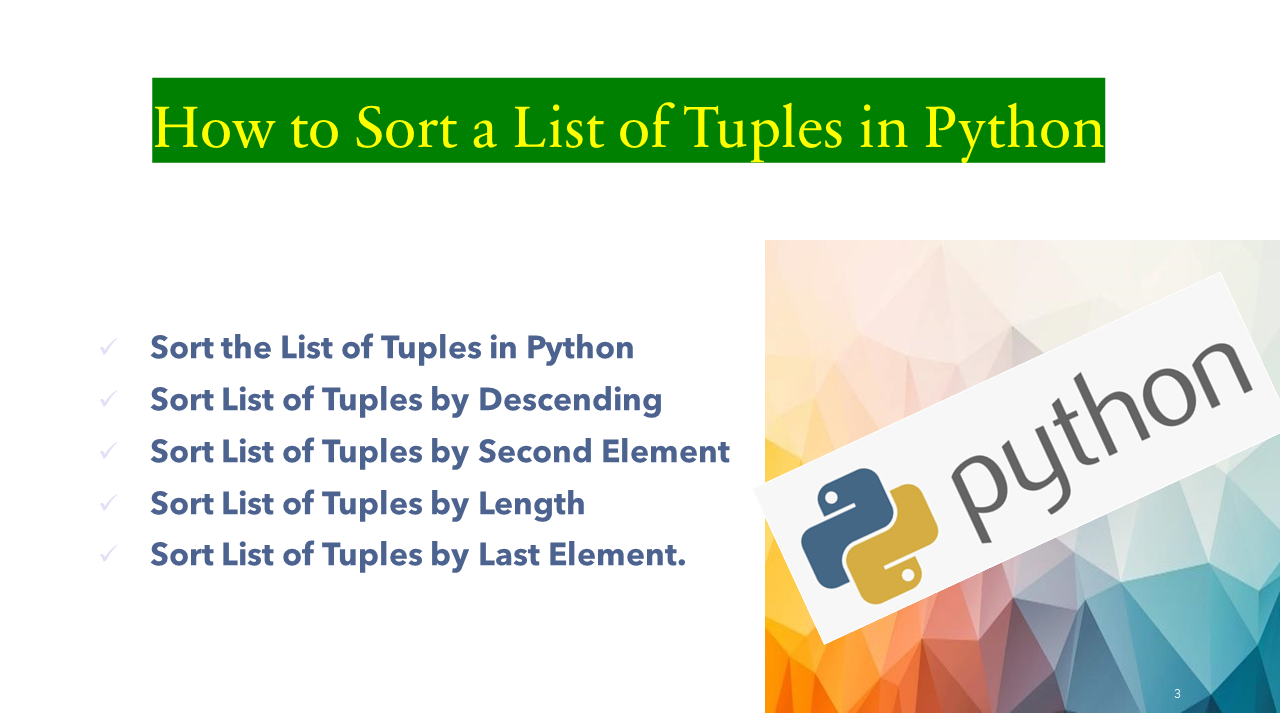
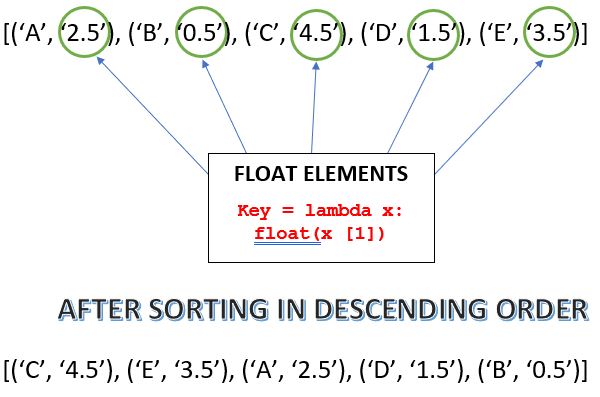
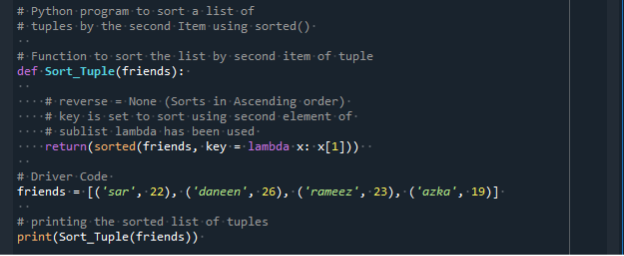
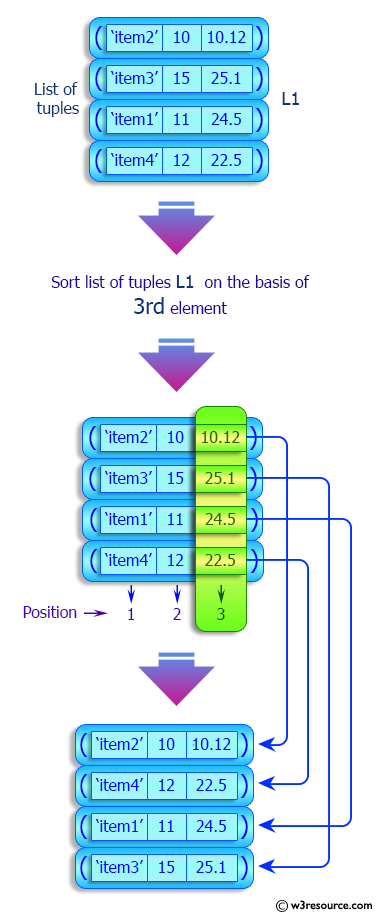



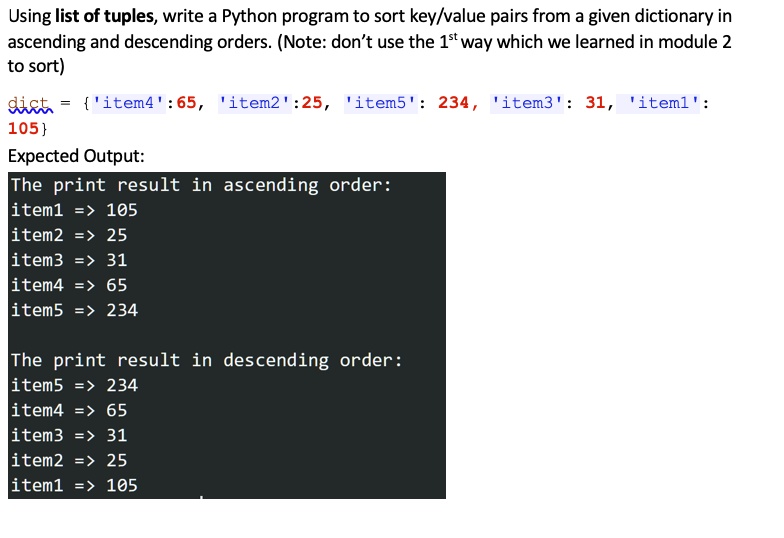






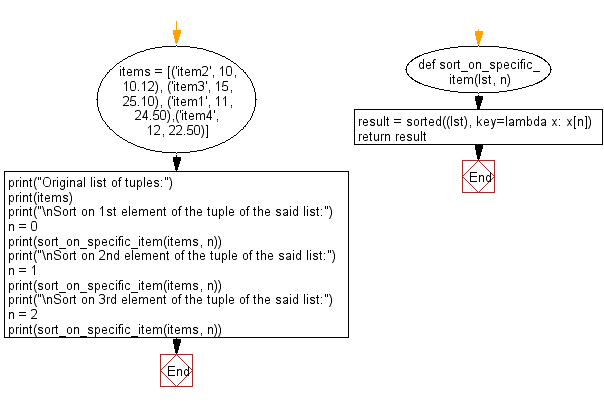


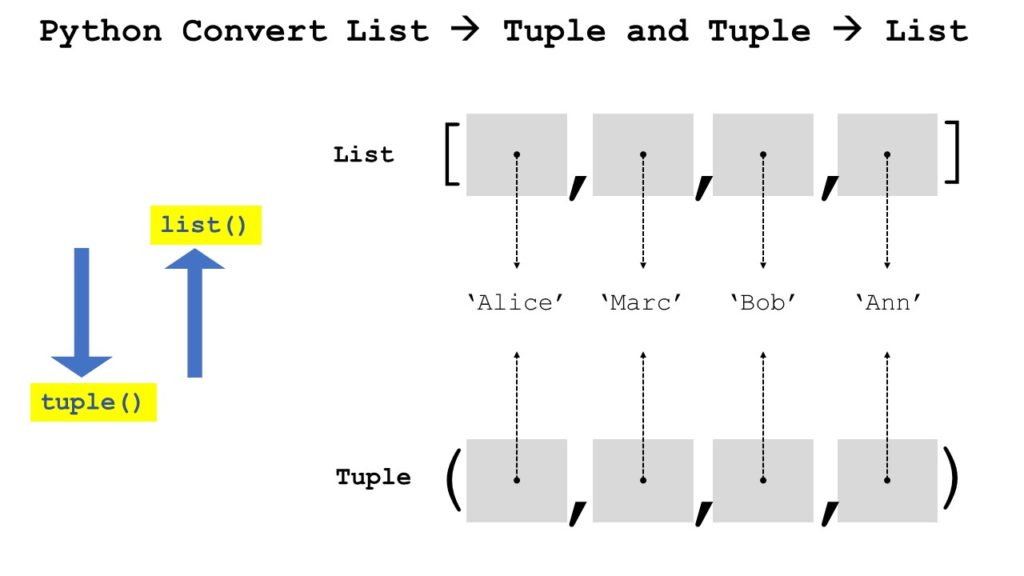
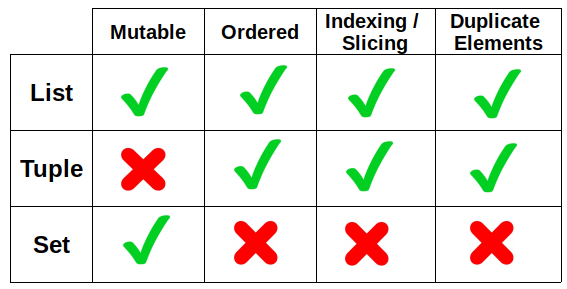


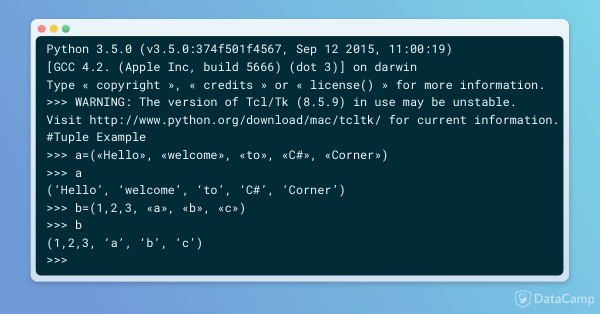




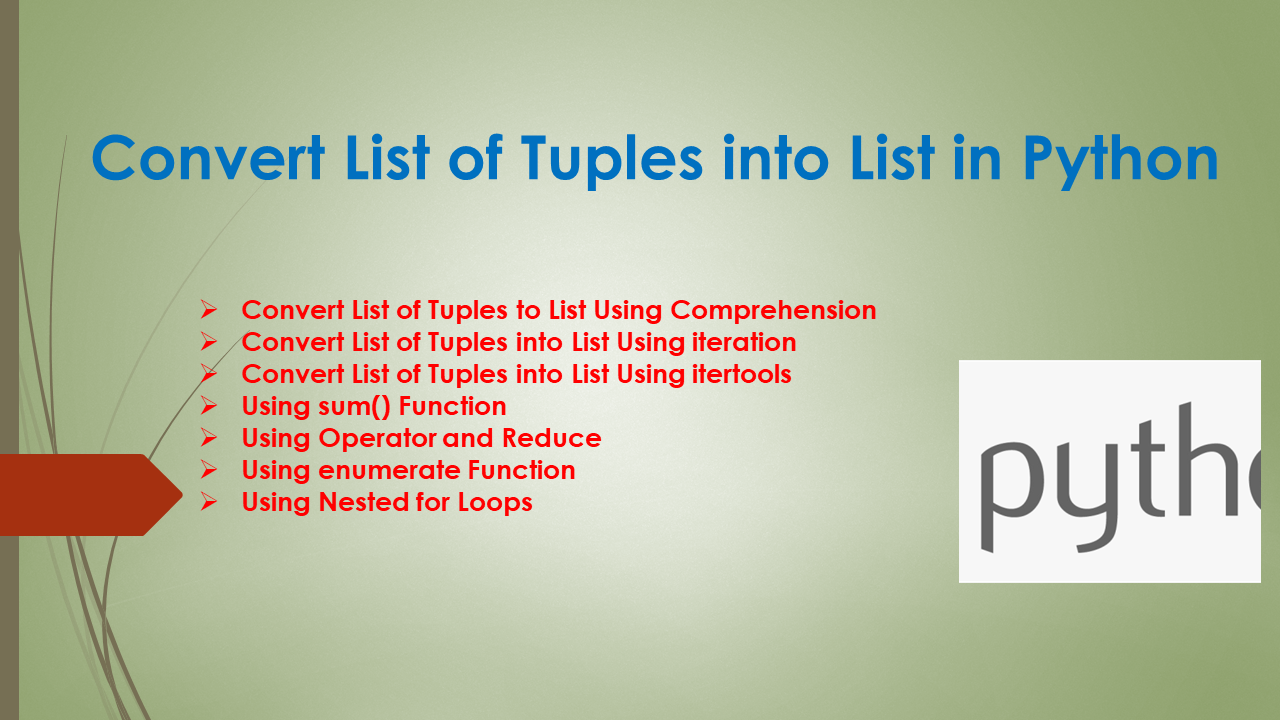


![SOLVED: In Python 3 4. List of Tuples Given a list of non-empty tuples, return a list sorted in increasing order by the last element in each tuple. Forexample:[1,7,1,3,3,4,52,2]yields[2,2,1,3,3,4,5,1,7] In [ ]:def Solved: In Python 3 4. List Of Tuples Given A List Of Non-Empty Tuples, Return A List Sorted In Increasing Order By The Last Element In Each Tuple. Forexample:[1,7,1,3,3,4,52,2]Yields[2,2,1,3,3,4,5,1,7] In [ ]:Def](https://cdn.numerade.com/ask_images/eb7a63a0da1c47348ba4d9099c8815d5.jpg)


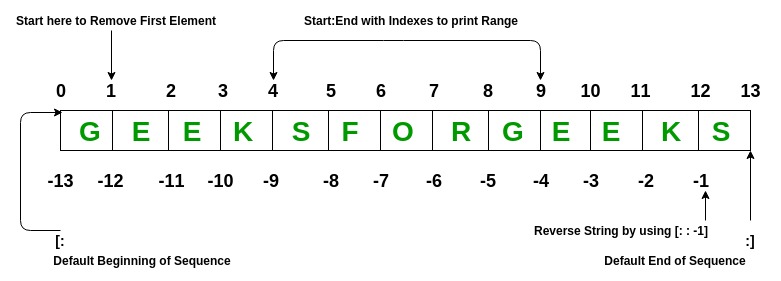





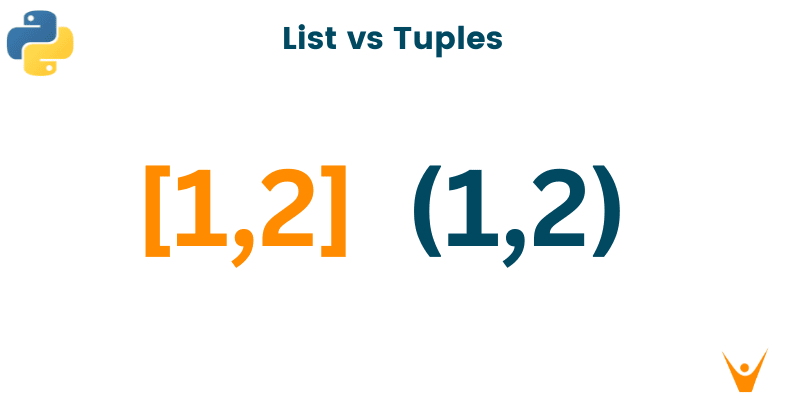
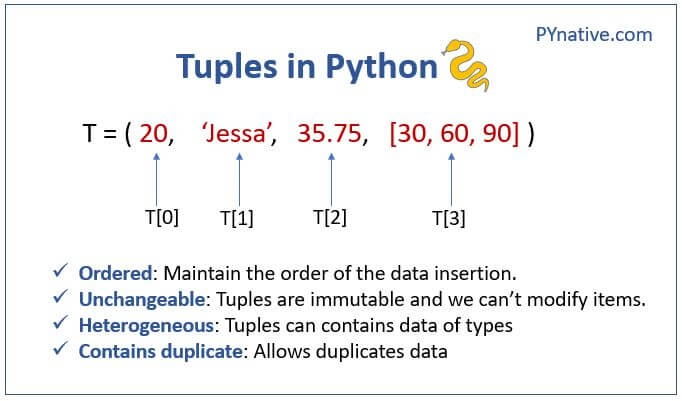
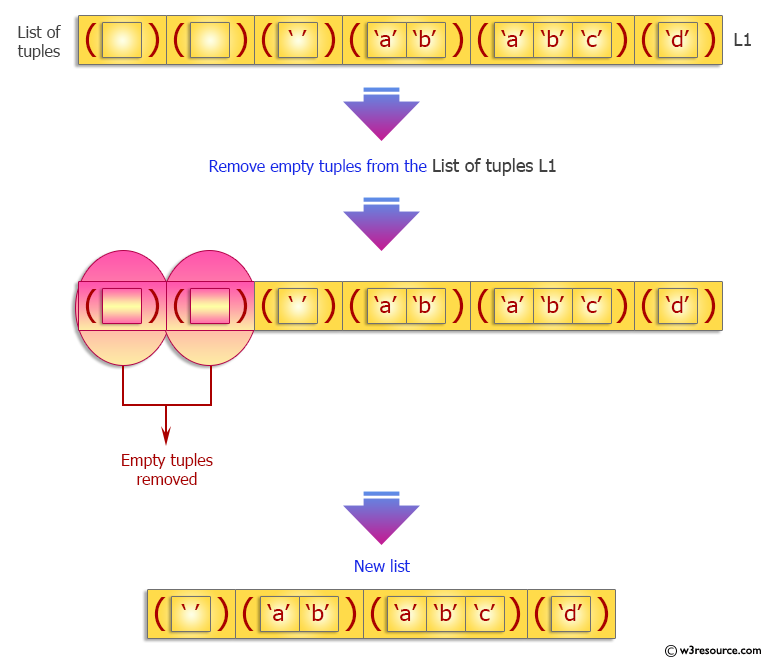
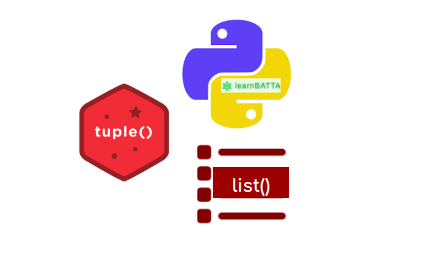




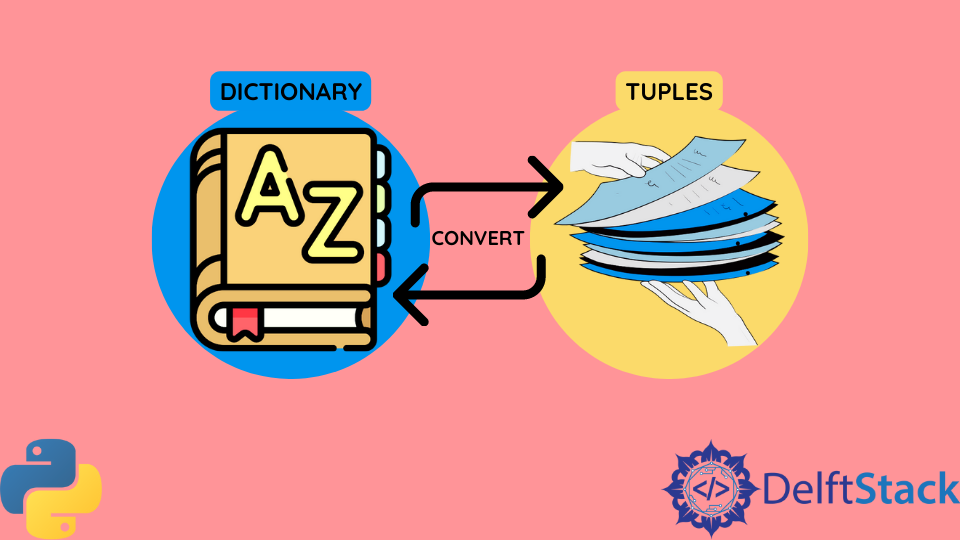

Article link: python sort list of tuples.
Learn more about the topic python sort list of tuples.
- How to Sort a List of Tuples in Python | LearnPython.com
- How to sort a list/tuple of lists/tuples by the element at a given …
- Python program to sort a list of tuples by second Item
- How to Sort List of Tuples in Python – Spark By {Examples}
- Python Program To Sort List Of Tuples
- How to Sort Tuple in Python – Javatpoint
- Sort List of Tuples by second or multiple elements in Python
- Sort Tuple in Python: Ascending & Decreasing Order (with code)
- Python Program To Sort a list of tuples by second Item
See more: https://nhanvietluanvan.com/luat-hoc